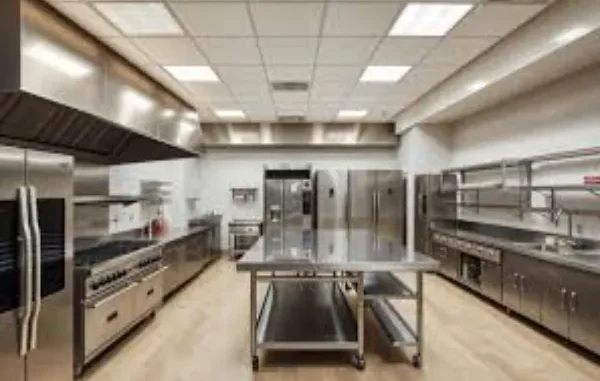
A safe kitchen is the heart of a successful food business. When the right rules are followed, accidents are less likely to happen, and daily work becomes smoother. Health and safety laws exist to protect workers and customers, so it is very important to build a kitchen that follows these rules from the start.
The design of a kitchen should keep safety, cleanliness, and comfort in balance. From the way equipment is placed to the air systems that control heat and smoke, every choice matters. Choosing the right commercial cooking equipment is also a key step, as it makes a big difference in safety and compliance. This article explains the main steps to creating a safe and reliable kitchen.
Plan the Layout with Safety in Mind
A good layout makes work easier and lowers the chance of mistakes. Workstations should be placed in a clear order, from raw food handling to final cooking, to avoid cross-contamination. Having cutting, washing, cooking, and storage areas arranged in the right sequence keeps things organized.
There should be enough space for staff to move without bumping into each other. Emergency exits must always be clear and easy to reach. Fire extinguishers, alarms, and smoke detectors should be installed where they can be seen and used quickly in an emergency.
Install the Right Ventilation and Fire Control
Kitchens create heat, steam, and smoke all day. Without proper ventilation, this can make the space unsafe and uncomfortable. Installing exhaust fans, air vents, and hoods helps keep the air clean and lowers the buildup of grease. Fire safety is another major concern.
Sprinkler systems and fire suppression tools should be installed to put out flames quickly if they start. Staff should also be trained to use extinguishers and follow safety drills. Keeping ventilation systems clean and working well adds another layer of safety.
Flooring and Surfaces for Hygiene and Stability
Slippery floors can cause many accidents in kitchens. Using non-slip flooring materials lowers the chance of staff falling while carrying food or hot items. Floors should be made from materials that are simple to clean since spills are common. Work surfaces should be smooth and non-porous. Stainless steel is widely used because it is strong, easy to wipe down, and safe for food preparation. Having a regular cleaning schedule helps maintain hygiene and reduces the chance of health code violations.
Choose Quality Cooking Equipment
Investing in commercial cooking equipment such as ovens, grills, fryers, and microwaves is key to smooth, safe kitchen work. These machines must perform reliably under heavy use. A quality convection or deck oven can bake evenly under pressure. Grills should offer stable heat control. Fryers need to reach and hold the correct temperature without fluctuation. Commercial microwaves should heat rapidly without overcooking edges.
When you select equipment, check that each unit meets safety codes and is certified. Ensure gas lines, ventilation hoods, and electric systems match local regulations. Ask for service records or warranties. Staff training must cover each specific machine, so operators avoid misuse or damage.
Creating a safe and compliant kitchen takes careful planning and consistent effort. Every detail, from the flooring to how the ventilation is maintained, plays a role in building a secure work environment. With regular care and maintenance of cooking equipment, a food business can provide a safe place for staff and customers. A kitchen that follows these steps gives peace of mind and supports long-term success.

Leave a Reply